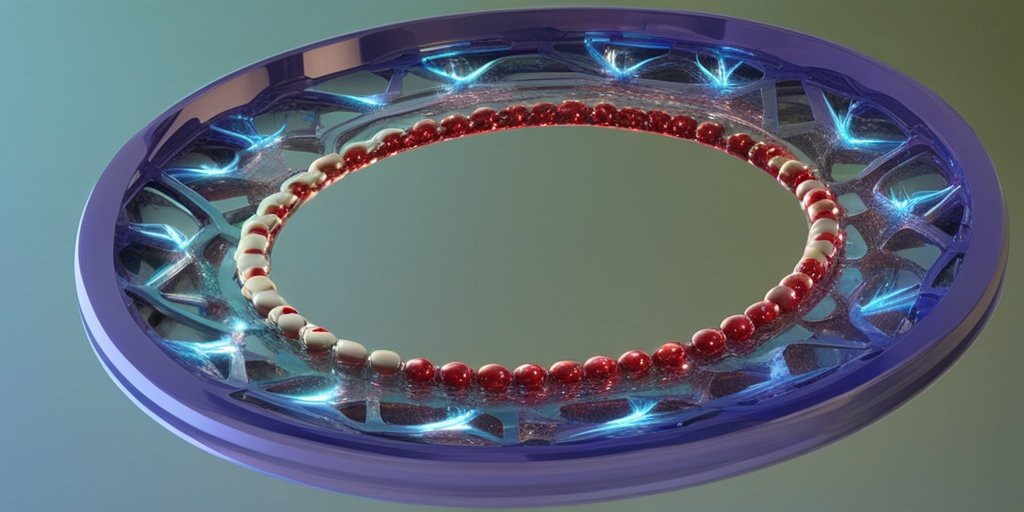⚡ Quick Summary
This study introduces an innovative technology called intelligent generic high-throughput oscillatory shear technology (iGHOST) for the fabrication of programmable microrobots designed for real-time visual guidance during endovascular embolization. The microrobots, particularly the MagLiCA type, demonstrate exceptional capabilities in precise navigation and drug delivery, addressing significant challenges in current medical practices.
🔍 Key Details
- 📊 Technology: Intelligent Generic High-Throughput Oscillatory Shear Technology (iGHOST)
- 🧩 Microrobot Type: Magnetically responsive lipiodol-calcium alginate (MagLiCA)
- ⚙️ Production Rate: Exceeds 240 mL h-1
- 📏 Size Range: Programmable sizes from 400 to 1000 µm
- 🌊 Fluid Navigation: Effective in fluid flows of up to 4 mL min-1
🔑 Key Takeaways
- 🚀 iGHOST technology enables the rapid production of uniform microrobots.
- 💡 Machine learning optimizes key synthesis parameters for microrobot fabrication.
- 🔍 MagLiCA microrobots are highly distinguishable under X-ray imaging.
- 🏥 Dual Functionality: Microrobots can perform embolization and drug delivery simultaneously.
- 🌱 Environmentally friendly manufacturing process without the need for purification.
- 🌍 Potential applications across various medical fields for precise drug delivery.

📚 Background
The field of endovascular embolization has faced significant challenges, particularly in the precise delivery of therapeutic agents within dynamic blood vessels. Traditional methods often lack the necessary precision and adaptability, leading to suboptimal treatment outcomes. The advent of microrobots presents a promising solution, but their effective deployment has been hindered by manufacturing limitations and navigation difficulties.
🗒️ Study
This study, conducted by a team of researchers, aimed to develop a new class of microrobots using the iGHOST technology. By leveraging machine learning, the researchers identified critical synthesis parameters that influence the success and sphericity of the microrobots. The focus was on creating a versatile platform capable of producing microrobots that can be programmed for various medical applications.
📈 Results
The results demonstrated that the iGHOST process could produce microrobots at an impressive rate of over 240 mL h-1, with sizes ranging from 400 to 1000 µm. The MagLiCA microrobots exhibited excellent visibility under X-ray imaging, allowing for precise navigation in blood vessels and effective embolization in liver and kidney applications. Furthermore, these microrobots showcased drug-loading capabilities, enabling targeted treatment alongside embolization.
🌍 Impact and Implications
The implications of this study are profound. The development of programmable microrobots using the iGHOST technology could revolutionize the field of minimally invasive surgery. By enabling real-time visual guidance and precise drug delivery, these microrobots have the potential to enhance treatment efficacy and patient outcomes across various medical applications. This technology not only addresses current challenges but also paves the way for future innovations in robotic-assisted therapies.
🔮 Conclusion
This study highlights the remarkable potential of iGHOST technology in the fabrication of multifunctional microrobots for medical applications. With their ability to navigate dynamically and deliver drugs precisely, these microrobots represent a significant advancement in the field of endovascular embolization. As research continues, we anticipate further developments that will enhance the capabilities and applications of microrobots in healthcare.
💬 Your comments
What are your thoughts on the future of microrobots in medical applications? We would love to hear your insights! 💬 Share your comments below or connect with us on social media:
Intelligent Generic High-Throughput Oscillatory Shear Technology Fabricates Programmable Microrobots for Real-Time Visual Guidance During Embolization.
Abstract
Microrobots for endovascular embolization face challenges in precise delivery within dynamic blood vessels. Here, an intelligent generic high-throughput oscillatory shear technology (iGHOST) is proposed to fabricate diversely programmable, multifunctional microrobots capable of real-time visual guidance for in vivo endovascular embolization. Leveraging machine learning (ML), key synthesis parameters affecting the success and sphericity of the microrobots are identified. Therefore, the ML-optimized iGHOST enables continuous production of uniform microrobots with programmable sizes (400-1000 µm) at an ultrahigh rate exceeding 240 mL h-1 by oscillatory segmenting fluid into droplets before ionic cross-linking, and without requiring purification. Particularly, the iGHOST-fabricated magnetically responsive lipiodol-calcium alginate (MagLiCA) microrobots are highly distinguishable under X-ray imaging, which allows for precise navigation in fluid flows of up to 4 mL min-1 and accurate embolization in liver and kidney blood vessels, thus addressing the current issues. Crucially, MagLiCA microrobots possess drug-loading capabilities, enabling simultaneous embolization and site-specific treatment. The iGHOST process is an intelligent, rapid, and green manufacturing method, which can produce size-controllable, multifunctional microrobots with the potential for precise drug delivery and treatment under real-time imaging across various medical applications.
Author: [‘Peng X’, ‘Tang H’, ‘Zhao Z’, ‘Zheng Y’, ‘Gui X’, ‘Jiang A’, ‘He P’, ‘Wen X’, ‘Zhang Q’, ‘Mei Z’, ‘Shi Y’, ‘Chu C’, ‘Zhang Y’, ‘Liu G’]
Journal: Small
Citation: Peng X, et al. Intelligent Generic High-Throughput Oscillatory Shear Technology Fabricates Programmable Microrobots for Real-Time Visual Guidance During Embolization. Intelligent Generic High-Throughput Oscillatory Shear Technology Fabricates Programmable Microrobots for Real-Time Visual Guidance During Embolization. 2024; (unknown volume):e2408613. doi: 10.1002/smll.202408613